 |
|||||
| Home | Research | For Teachers | HISTORY Level 1 Level 2 Level 3 |
PRINCIPLES Level 1 Level 2 Level 3 |
CAREER Level 1 Level 2 Level 3 |
| Gallery | Hot Links | What's New! | |||
| Web Administration and Tools | |||||
 |
|||||
| Home | Research | For Teachers | HISTORY Level 1 Level 2 Level 3 |
PRINCIPLES Level 1 Level 2 Level 3 |
CAREER Level 1 Level 2 Level 3 |
| Gallery | Hot Links | What's New! | |||
| Web Administration and Tools | |||||
Incompressible flow around a cylinder and a wing section
![]()
| Netscape users: Please be advised that this page contains JAVA script to show the animations. In order to view the animations effectively, please move your mouse over the "hot" words embedded in the text but do NOT click on them, otherwise it will take you back to our homepage. If that happens, use the "BACK" button to return to this page. |
Inviscid (ideal) flow: |
Viscous flow: |
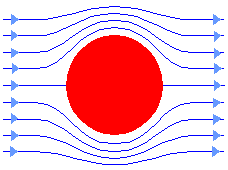 |
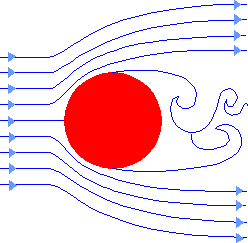 |
| The impingement of flow on the cylinder creates a stagnation point on the approaching surface. The departure of
the flow away from the cylinder creates another stagnation point on the trailing surface. In the idealized situation where viscosity is neglected, the no-slip condition at the surface of the cylinder does not apply. Also in the absence of vorticity (inviscid flow) flow separation cannot occur. |
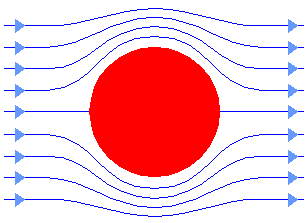 |
| One stagnation point
is created in front of the cylinder. Because of the viscosity, a no-slip condition exists everywhere on the surface of the cylinder, i.e., the velocity must vanish everywhere on the surface. Consequently a boundary layer is created where the velocity transitions from a value of zero at the surface to the free stream value some distance away from the cylinder surface. The inertia of the fluid as it rounds the top and bottom of the trailing surface causes the flow to separate at these locations. This creates a disturbed wake (Von-Karman vortex street) downstream from the cylinder. |
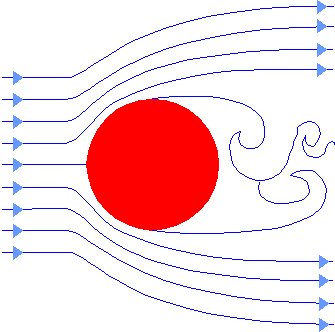 |
| Inviscid (ideal) flow: | Viscous flow: |
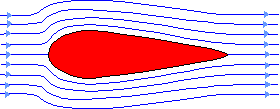 |
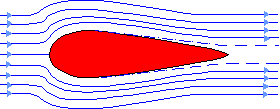 |
| As with the cylinder, stagnation points are
created by the impingement of the flow on the approaching surface and the departure of the
flow on the trailing surface. In the idealized situation where viscosity is neglected, the no-slip condition at the surface of the wing section does not apply. Also in the absence of vorticity (inviscid flow) flow separation cannot occur. |
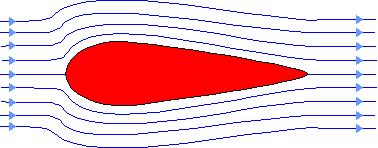 |
| One stagnation point
is created in the wing section's leading edge. Because of the viscosity a no-slip condition exists everywhere on the surface of the profile i.e. the velocity must vanish everywhere on the surface. Consequently a boundary layer is created. The inertia of the fluid as it rounds the top and bottom of the trailing surface causes the flow to separate at these locations. This creates a disturbed wake that induces vortices downstream from the wing section. |
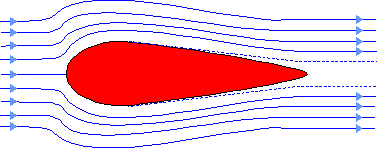 |
Send all comments to ![]() aeromaster@eng.fiu.edu
aeromaster@eng.fiu.edu
© 1995-98 ALLSTAR Network. All rights reserved worldwide.
Updated: February 23, 1999